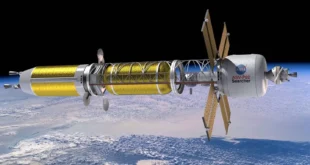by Karim Michel Sabbagh
 “2030 Destination Mars” is the core theme of this scenario mapping exercise.
“2030 Destination Mars” is the core theme of this scenario mapping exercise.
The objective is to safely land a manned mission on the red planet and set up the foundation for a permanent presence. The outcome would usher the start of an era where mankind takes firm steps in becoming an interplanetary species.
There are three scenarios for pursuing this unprecedented endeavour.
Scenario 1 mirrors Ron Howard’s Mars documentary where an international coalition, which I would call Techno Globalist or TG (the National Geography docudrama calls it International Mars Science Foundation), leads this unrivalled effort.
In this scenario, the Mars mission lands in 2030, a full three years ahead of what transpires in the Howard production – and I do apologize for revealing this data point to any reader planning on watching the series any time soon.
What is core to this scenario is the ability and will of nations to cooperate beyond frontiers in pursuing this formidable achievement for the benefit of every human being on our planet. Their model is to create a borderless project and bring to bear their multi-disciplinary prowess and experience.
Decision makers across the globe have likely reviewed the lessons learnt from the early US and Soviet Union space programs. They concluded, as a result, that their newfound utopianism was a better approach than the nationalistic model of the past.
Scenario 2 builds on the experience of the space station programs where regional coalitions are driving multi-year space programs. As a reminder, the International Space Station is supported by national and regional space agencies representing the United States, Russia, European Union, Japan, and Canada. In parallel, China is building its own permanent base in space through the Tiagong program.
In this scenario, the competing Mars missions are comprised of three coalitions which are referred to as Techno Regionalists or TRs. The United States along with Canada, the European Union, Japan, and India form TR 1. Russia and some of its allies with meaningful space experience and aspirations represent TR 2. And finally, China is largely driving TR 3 solo.
Decision makers in this scenario are building on their experience from 2020 where regional coalitions have formed around economy- and security-shaping fields on our planet. The decoupling they have fashioned across domains such as science, technology and even finance is now taking hold in space.
In retrospect, some of the headline-grabbing cases of 2020 seem to have served as a dress rehearsal for an expanding decoupling that is impacting our nascent efforts to become an interplanetary species.
Scenario 3 gnocchifies the Mars mission to a naked competition among space faring and aspiring nations. The technology and other decoupling trends of the early 2020s are now impacting most sectors. The strengthening nationalistic drives are leading decision makers down the path of “let a thousand flowers bloom” in the pursuit of mankind’s most formidable challenge.
The competing Mars missions in this scenario are therefore numerous and referred to as Techno Nationalists or TNs. They are largely defined through public-private partnerships with the NASA-SpaceX tandem as a case in point, and Elon Musk is proving skeptics wrong so far. Comparable combinations are surfacing within nations such as Australia, Canada, China, France, Germany, India, Italy, Japan, Russia, South Korea, and the United Kingdom to name a few.
Decision makers in this scenario have put nationalistic considerations front-and-center, and their advocacy is finding a receptive audience among geopolitical strategists who have been on the side of this all-out decoupling for decades. Newly minted economists are brushing away any notion of ‘tragedy of the commons’ as competing national programs mushroom.
As one moves from scenario mapping (as covered so far) to scenario planning (to cover multi-variable simulations), three questions are particularly relevant: (1) Which scenario is most likely to yield the best outcome for mankind? (2) Which scenario is likely to prove most resilient to future risks? and (3) Which scenario will be most challenging in the short run and most rewarding in the long run?
We may not have to set our eyes on Mars to answer these questions, although I would very much like this endeavour to become a reality in my lifetime. In fact, we could answer these questions by considering how we will reach the next frontiers of science and technology innovation in the coming years.
Using fields such as DNA sequencing, energy storage, robotics, artificial intelligence and blockchain, which of the three scenarios (TG, TR, TN) is likely to yield the best outcome for mankind, prove to be most resilient in the face of unknow risks, and demand that we confront head-on formidable challenges in present time for a better future?
Follow-on scenario planning could shed considerable light on these points. For a shorter path, one could also read Two Sides of the Moon by Leonov and Scott where they narrate side-by-side their experience during the cold war space race of the 60s and 70s. These first-person accounts could be quite informative for the questions at hand.

Karim Michel Sabbagh: Karim was the CEO of DarkMatter where he led its evolution into a leading firm in digital transformation and applied analytics, cyber security and ultra-secure communications. The successful business trajectory lead to multiple buyouts in 2019. He was also the President and CEO of SES where he led its strategy-based transformation into SES Video and SES Networks, and its elevation to become the no.1 provider of satellite-enabled communications solutions globally. He also served as a Senior Partner and global practice leader for communications, media & technology at Booz&Co (previously Booz Allen Hamilton), and helped shape the strategic agenda of global corporations.
This article was originally published on LinkedIn. You can read the original here. Republishing with authorisation of the author.





